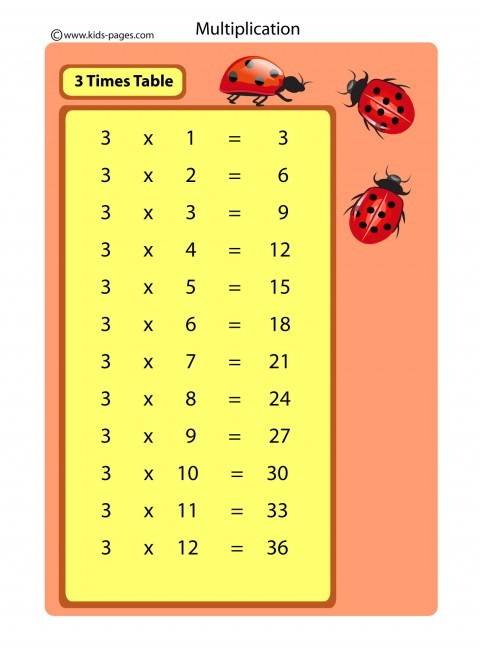

We have found that it's easier to learn your multiplication tables using smaller individual multiplication tables focused on one number at a time, you can find those below. This is the full multiplication table for 1-12. Teach students how to use the chart and find products by following and matching the position of numbers using the vertical and horizontal axes. If a 12 x 12 chart seems too overwhelming, perform the same process with a 10 x 10 multiplication chart. Throughout this article we have also included some extremely cute times tables to make it a bit more fun. If you wish, supplement this with student copies of the multiplication chart. The box they meet at has the number 42 in it, which tells you that 6 times 7 equals 42. That is your answer.įor example…if we chose the number 6 on the left hand column (it's in blue) and the number 7 on the top row (it's in green), we would go across the row from the 6 on the side while going down the column from the number 7 at the top. Step Three – Go along the row from the left hand column number, then go directly down the column from the top row number until both the column and the row meet at one square. Step Two – Choose the number you want to multiply your first number with from the row across the top of the chart (directly next to the X) Components: Vizabi bubble chart - Version: 3.14.3 - Build at 18:32 Vizabi shared components - Version: 1.27.0 - Build at 11:19. Step One – Choose a number from the left hand column of the chart (directly under the X) A quick search on Amazon shows an array of options.©Carla Francesca Castagno/

If you don’t have one, you can order one online for less than 10 dollars. No matter how many times you cover multiplication, it’s always a good idea to have a physical copy of the table available in your classroom. To help with memorization, keep visual materials on hand in your classroom. Some teachers will include a few harder problems for a bonus or to identify high-achieving students. Including more challenging problems as a bonus will help you to gauge high-achieving students. Depending on your preference, you may also cover 11 and 12. Once your students master 0-3, proceed to 4-7, and then 8-10.

Find a rhythm that works well in your classroom. Give students time to practice the multiplication facts.Introduce new multiplication facts one by one, gradually and incrementally opening the concept to the more advanced steps of multiplying by 2, 3, 4 and so on.Encourage students and set time for them to practice verbally or in writing.As you continue your lesson, consider following these rules: While there are many approaches to memorizing the multiplication chart, recall the examples above - the “easy” numbers - as a good starting point.


 0 kommentar(er)
0 kommentar(er)
